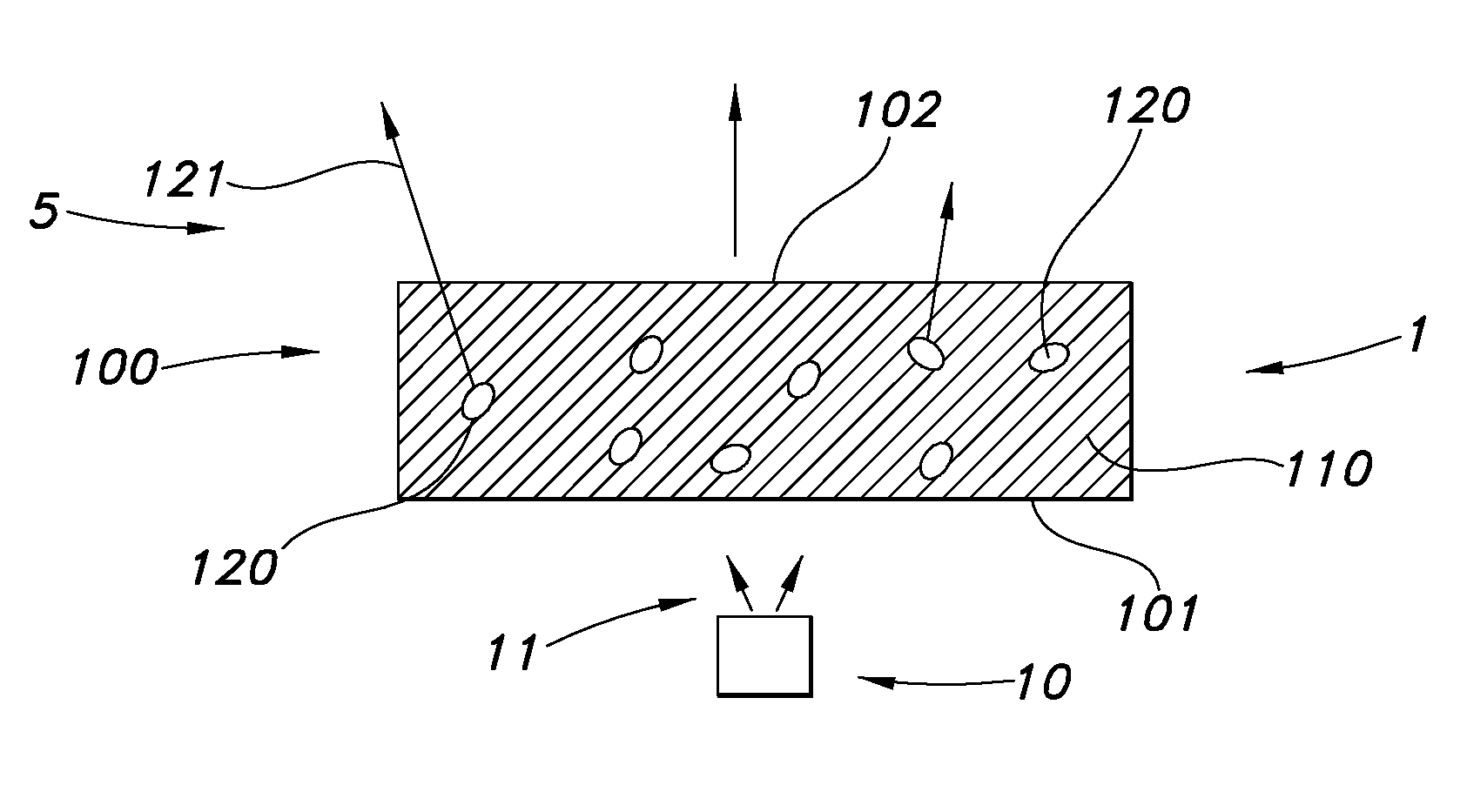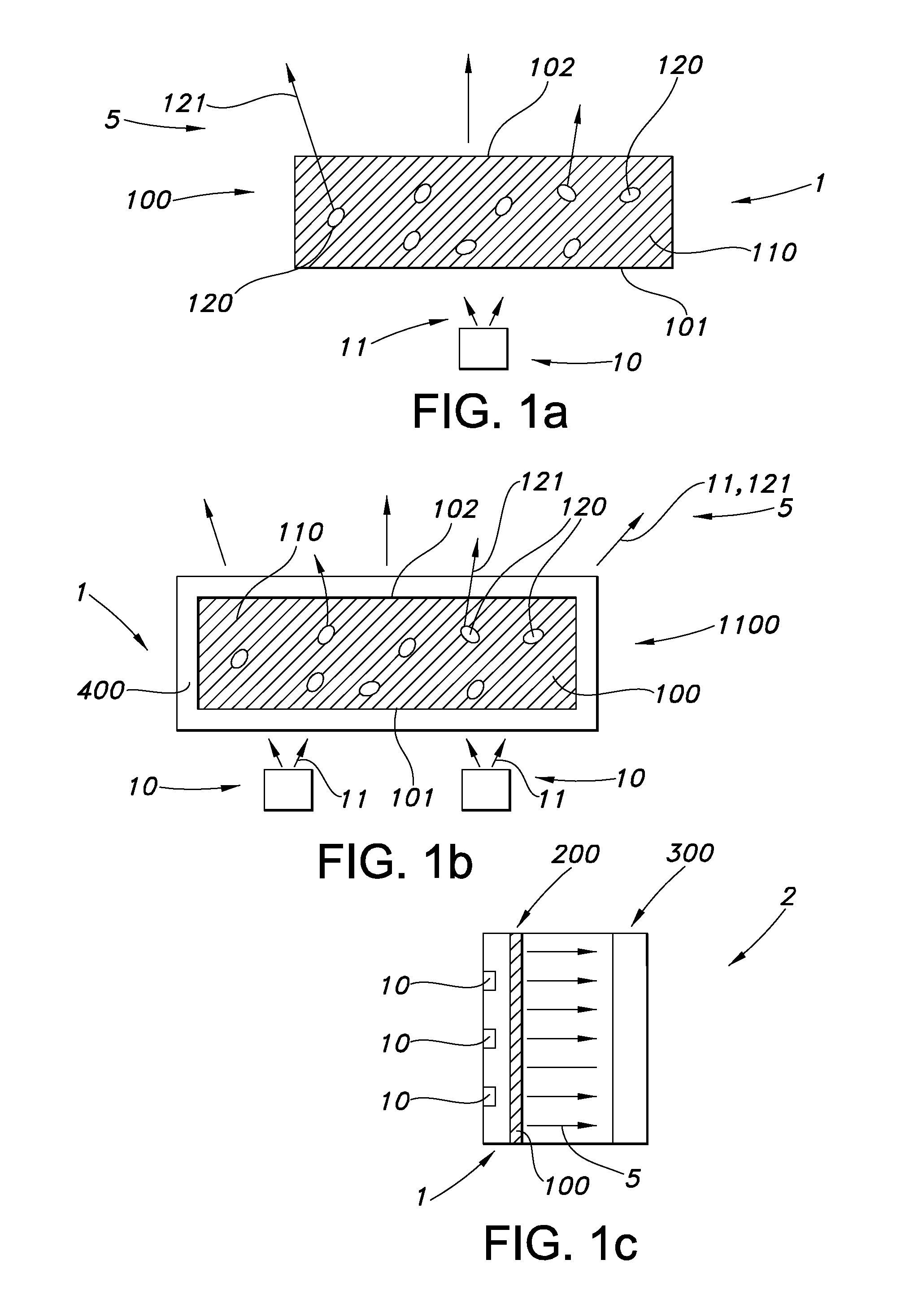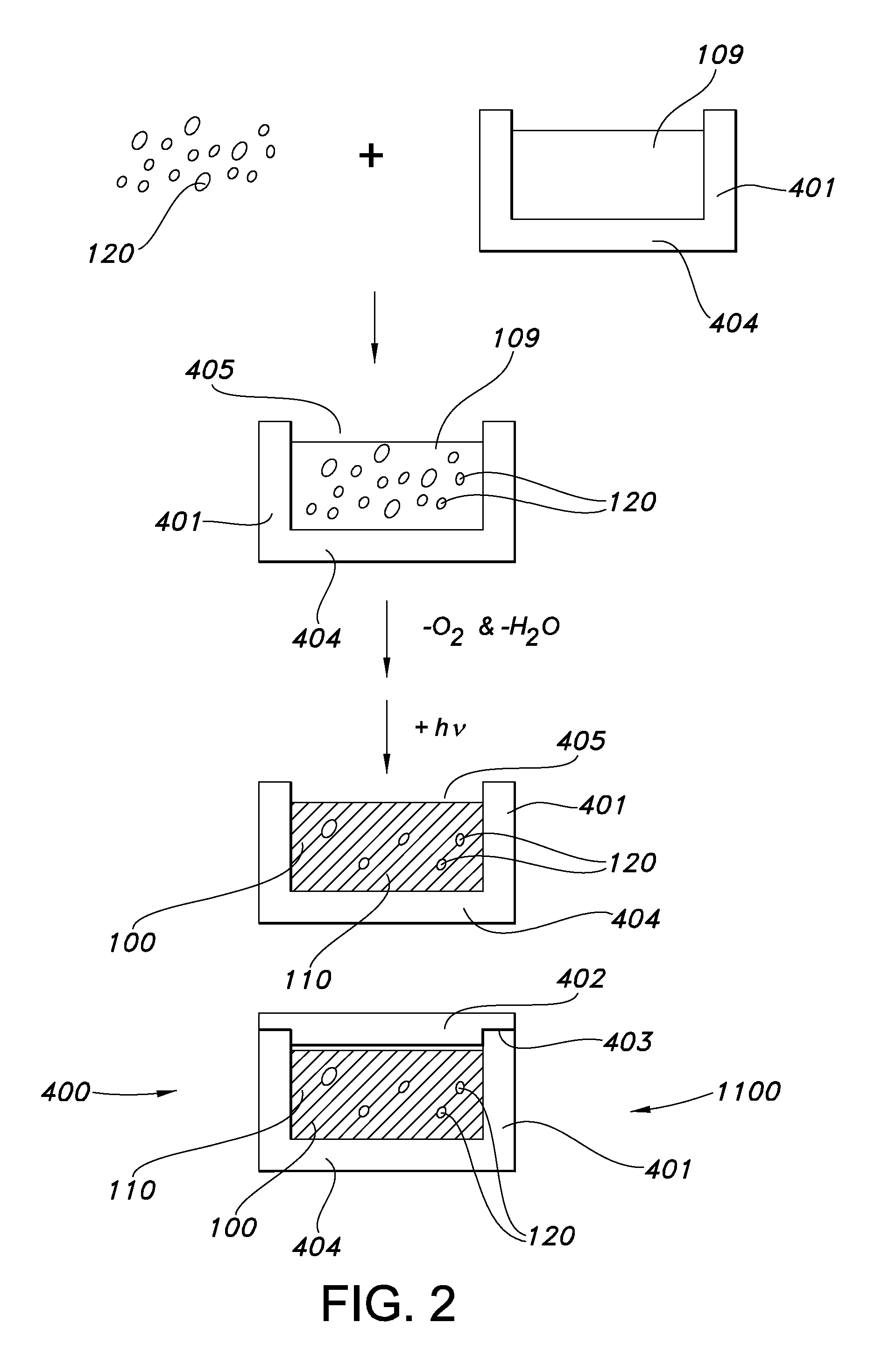Highly stable QDS-composites for solid state lighting and the method of making them through initiator-free polymerization
a solid-state lighting and qds-compositivity technology, applied in the field of lighting devices, can solve the problems of quenching the emission of light-converting nanoparticles, negative influence of light-converting nanoparticles, and reducing both quantum efficiency and stability of light-converting nanoparticles, and achieves small bond dissociation energy, high efficacy, and high quality white light
- Summary
- Abstract
- Description
- Claims
- Application Information
AI Technical Summary
Benefits of technology
Problems solved by technology
Method used
Image
Examples
Embodiment Construction
[0099]FIG. 1a schematically depicts a lighting device 1 comprising a light source 10 configured to generate light source light 11 and a light converter 100 configured to convert at least part of the light source light 11 into visible converter light 121. Here schematically only one light source 10 is depicted. However, more than one light source 10 may be present.
[0100]The light converter has an upstream side 101, which is at least partly directed to the light source 10, and a downstream side, which faces away from the light source 10 (in this transmissive configuration).
[0101]The light converter 100 comprises a polymeric host material 110 with light converter nanoparticles 120 embedded in the polymeric host material 110. These can be dots, rods, a combination thereof, etc. (see also above). The light converter nanoparticles 120 generate upon excitation by the light source light 11 visible converter light (and optionally also non-visible radiation, like IR radiation). At least part ...
PUM
| Property | Measurement | Unit |
|---|---|---|
| wavelength | aaaaa | aaaaa |
| wavelength | aaaaa | aaaaa |
| wavelength | aaaaa | aaaaa |
Abstract
Description
Claims
Application Information
 Login to View More
Login to View More - R&D
- Intellectual Property
- Life Sciences
- Materials
- Tech Scout
- Unparalleled Data Quality
- Higher Quality Content
- 60% Fewer Hallucinations
Browse by: Latest US Patents, China's latest patents, Technical Efficacy Thesaurus, Application Domain, Technology Topic, Popular Technical Reports.
© 2025 PatSnap. All rights reserved.Legal|Privacy policy|Modern Slavery Act Transparency Statement|Sitemap|About US| Contact US: help@patsnap.com



